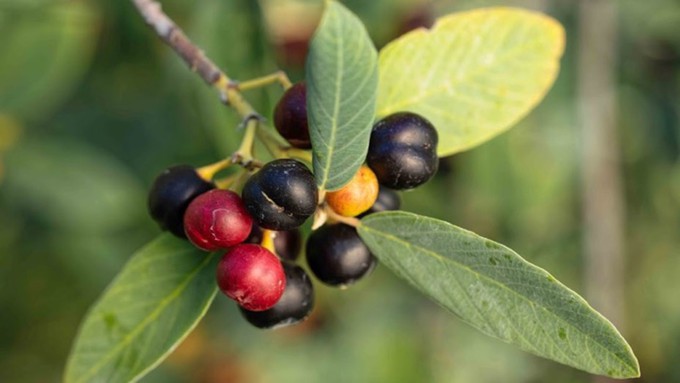
Registration required for free event Aug. 6

The coffeeberry, another name for California buckthorn, is a native shrub that can be found in several habitats around the state. Photo courtesy Beth Savidge
What does a garden of California native plants look like in summer? Patricia Carpenter, a Garden Ambassador for the California Native Plant Society, invites visitors to come find out during the Seasonal Summer Ramble at her garden near Davis.
The 1-acre native garden will be open to visitors 7 a.m. to 11 a.m. Sunday, Aug. 6. The event is free but registration is required here. The non-native garden will be open to view as well.
Highlights of a summer ramble:
• See how plants adapt to heat and drought. Also, irrigation strategies.
• View summer blooms.
• Observe seasonal maintenance, seed collecting, and discuss plans for fall planting.
The Miridae Mobile Nursery will be on site for sales to anyone inspired to add more native plants to their garden.
Visitors can attend an optional short orientation and Q&A gathering with Patricia at 8 a.m. and 10 a.m. Meet near the check-in table.
Carpenter's garden is south of Russell Boulevard, west of Davis, at Pierce Ranch Road. A map link is available on the registration page.
Although masks are optional, visitors are asked to please respect distancing and mask wearing of other visitors. Wearing sturdy shoes is advised. No dogs, please.
Visitors are welcome to bring a snack to enjoy during the morning. A composting toilet available onsite.
To learn more about Carpenter's Garden Ambassadorship and her garden, visit the CNPS website here.
Comments
0 comments have been posted.Sacramento Digs Gardening to your inbox.
Sites We Like
Garden Checklist for week of July 21
Your garden needs you!
* Keep your vegetable garden watered, mulched and weeded. Water before 8 a.m. to reduce the chance of fungal infection and to conserve moisture.
* Feed vegetable plants bone meal, rock phosphate or other fertilizers high in phosphate to stimulate more blooms and fruiting. (But wait until daily high temperatures drop out of the 100s.)
* Don’t let tomatoes wilt or dry out completely. Give tomatoes a deep watering two to three times a week.
* Harvest vegetables promptly to encourage plants to produce more. Squash especially tends to grow rapidly in hot weather. Keep an eye on zucchini.
* Pinch back chrysanthemums for bushy plants and more flowers in September.
* Remove spent flowers from roses, daylilies and other bloomers as they finish flowering.
* Pinch off blooms from basil so the plant will grow more leaves.
* Cut back lavender after flowering to promote a second bloom.
* It's not too late to add a splash of color. Plant petunias, snapdragons, zinnias and marigolds.
* From seed, plant corn, pumpkins, radishes, winter squash and sunflowers.